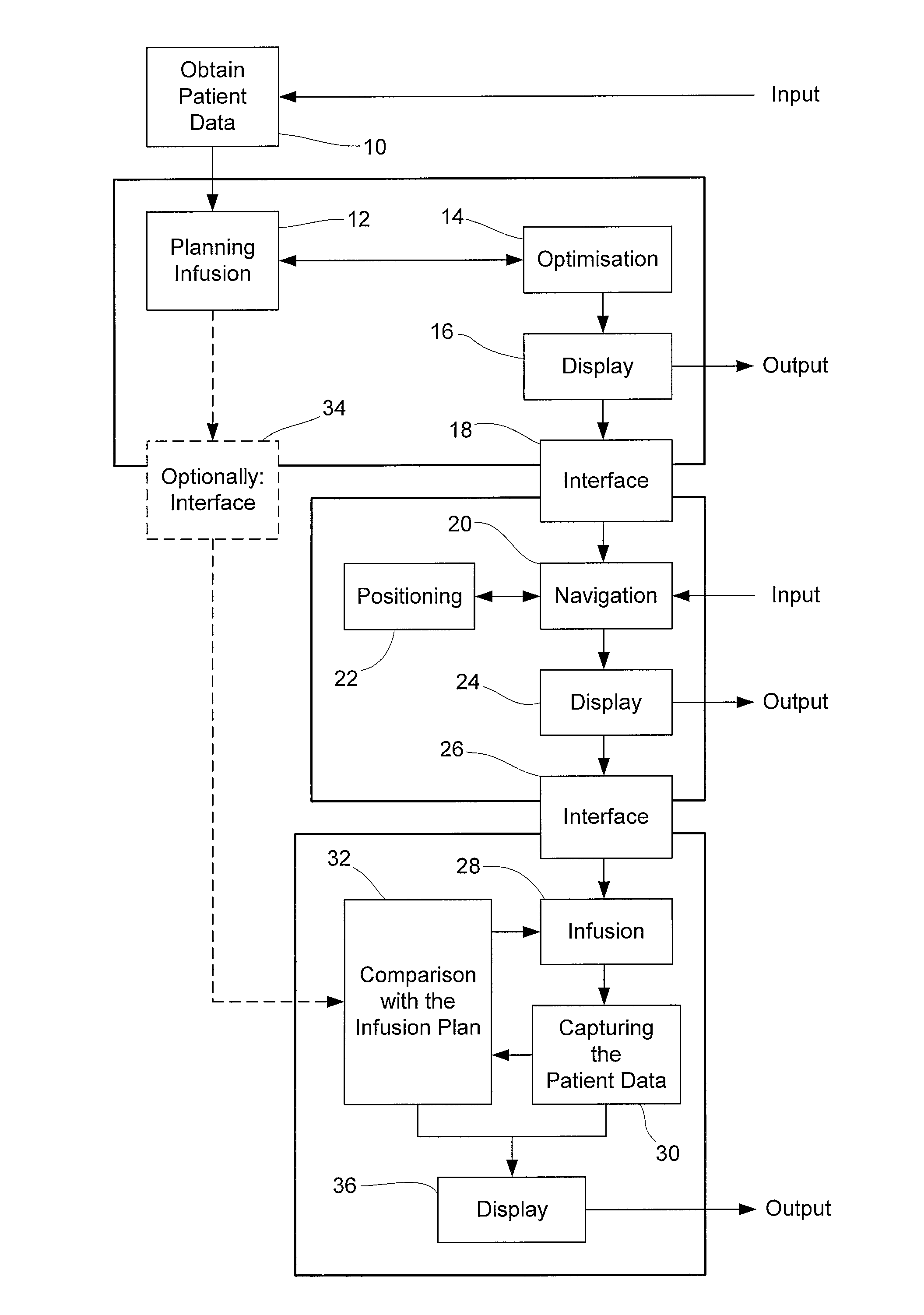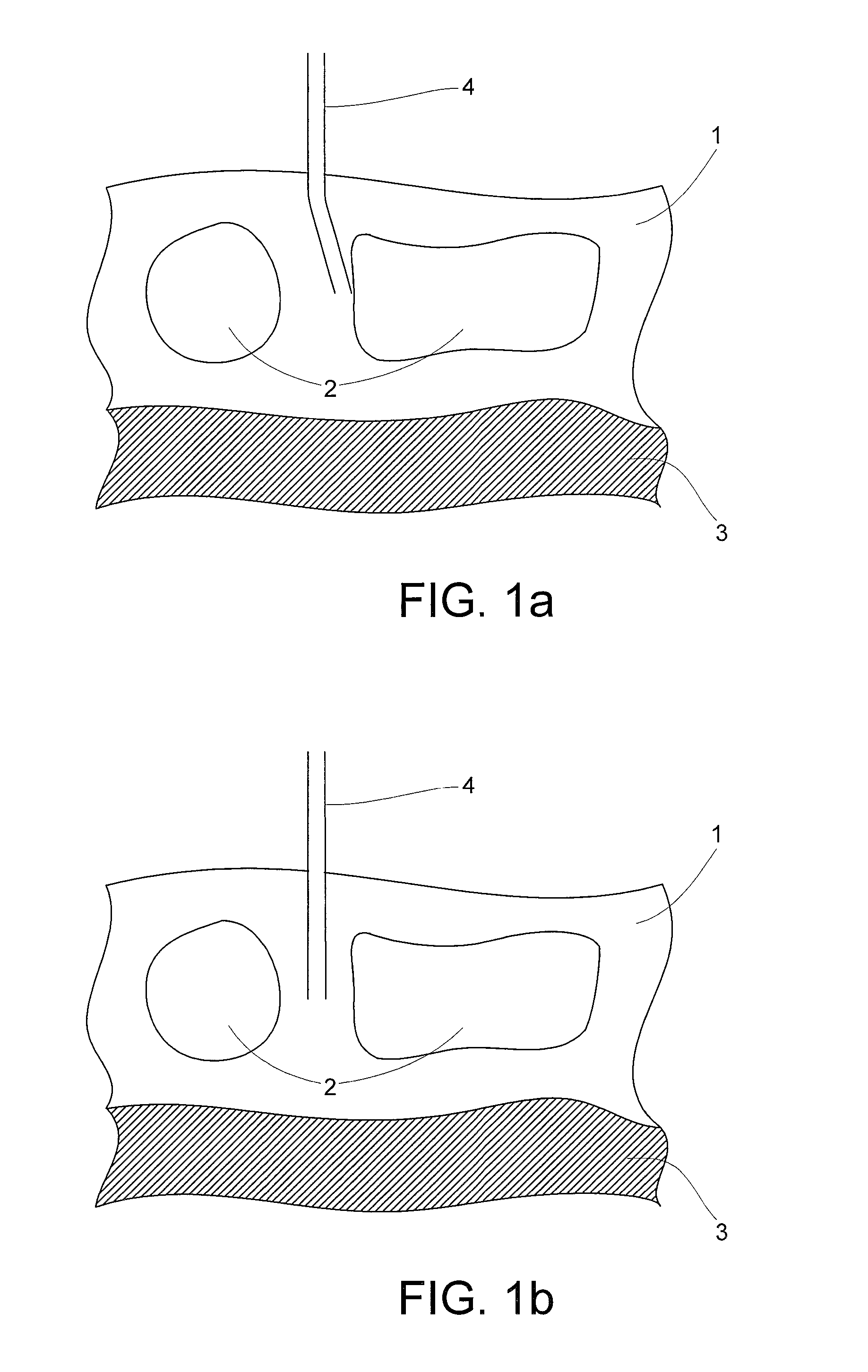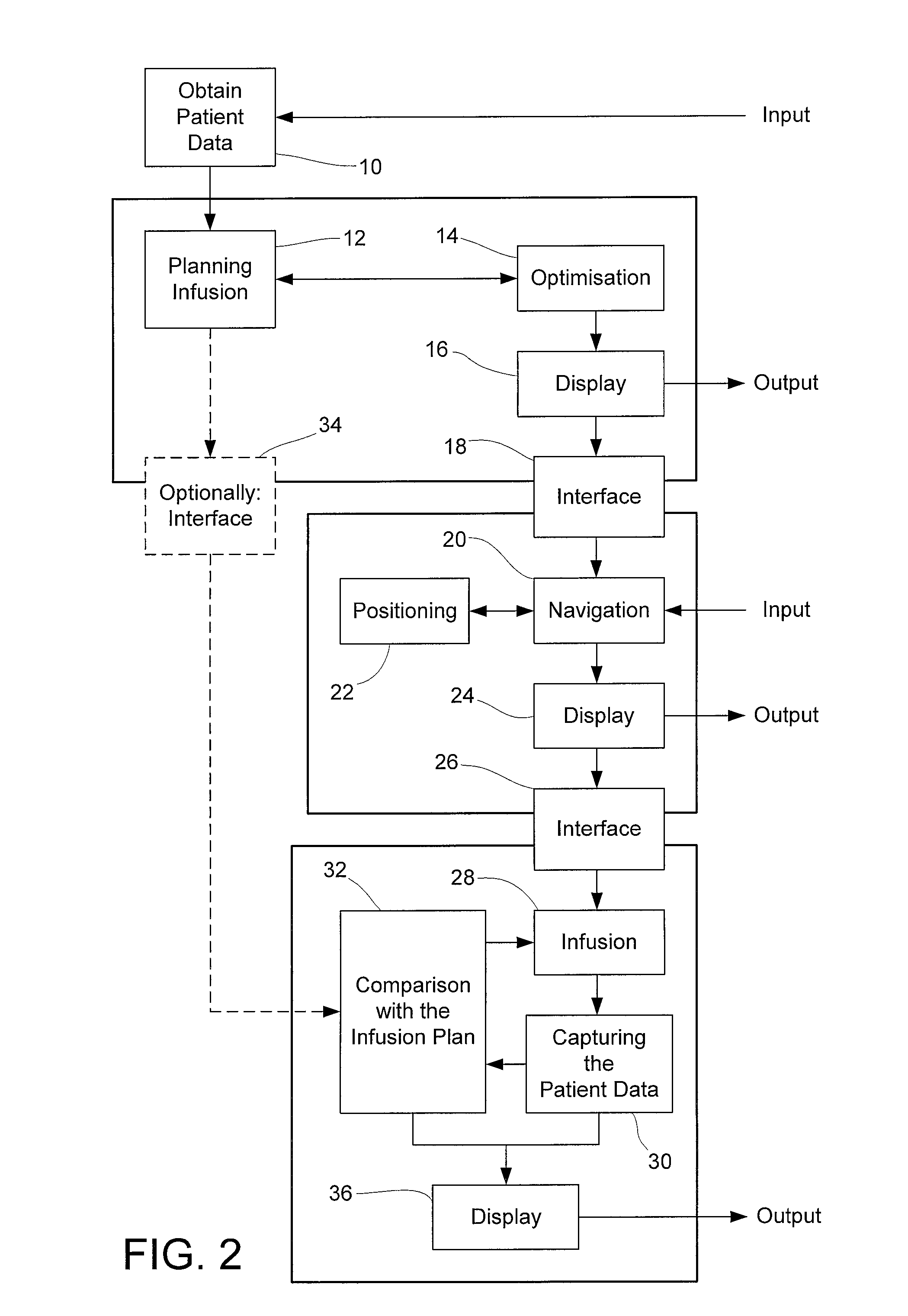Risk assessment for planned trajectories
a risk assessment and planned trajectories technology, applied in the field of devices and methods for preparing and planning the placement of devices, can solve the problems of increasing the determined level of risk, increasing the risk of inaccurate placement, and increasing the respective level of risk, so as to reduce the rate of delivery or injection pressure
- Summary
- Abstract
- Description
- Claims
- Application Information
AI Technical Summary
Benefits of technology
Problems solved by technology
Method used
Image
Examples
Embodiment Construction
[0058]FIG. 1a shows an image acquired using an exemplary method for planning the movement and placement of a catheter 4 in tissue 1 of a patient. The patient 1 has structures of risk 2, e.g., damageable regions, and a target region 3, e.g. a region to be treated, such as a tumor. For efficiently treating the tumor 3, it is desirable to position the catheter 4 as near as possible to the tumor 3 or directly into the tumor 3 so that the treatment substance can be directly injected into the tumor. The remainder of the tissue should not come into contact with the substance. Further, the catheter 4 should not cross the structures of risks 2 and should not be placed in close proximity to the structures of risk 2. For this purpose, an ultrasound imaging system can be used to image and display the tissue 1, as shown in FIG. 1a, so that the movement and placement of the catheter 4 can be planned and controlled. As shown in FIG. 1a, a catheter 4 is inserted into the tissue 1 at a position susp...
PUM
 Login to View More
Login to View More Abstract
Description
Claims
Application Information
 Login to View More
Login to View More - R&D
- Intellectual Property
- Life Sciences
- Materials
- Tech Scout
- Unparalleled Data Quality
- Higher Quality Content
- 60% Fewer Hallucinations
Browse by: Latest US Patents, China's latest patents, Technical Efficacy Thesaurus, Application Domain, Technology Topic, Popular Technical Reports.
© 2025 PatSnap. All rights reserved.Legal|Privacy policy|Modern Slavery Act Transparency Statement|Sitemap|About US| Contact US: help@patsnap.com



